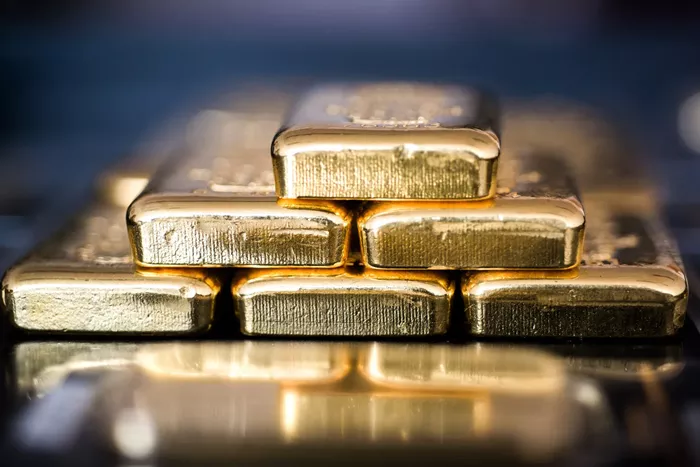Gold’s remarkable surge past $2,700 per ounce in October 2024 marked the onset of a sustained rally, which has continued into 2025. This upward momentum, driven by various economic forces, has caught the attention of investors, with the precious metal reaching new price highs. While inflation concerns and central bank purchases play a significant role in this surge, a noteworthy aspect is the evolving relationship between gold prices and the U.S. dollar. Traditionally, gold prices tend to fall when the dollar strengthens, but recent months have shown deviations from this pattern, surprising many market analysts.
Experts delve into the factors behind this ongoing rally, examining the relationship between gold prices and the dollar, and what it means for future market movements.
Why Gold Prices Are Climbing
According to Ben Nadelstein, head of content at Monetary Metals, gold’s appeal lies in its low correlation with other asset classes, making it a valuable asset in an uncertain market. This characteristic has attracted investors, especially as market volatility intensifies. However, Nadelstein acknowledges that this is not the sole driver of gold’s ascent. Other key factors include:
Central Bank Purchases: Asian nations, particularly China and India, have significantly increased their gold reserves in recent months.
Investor Sentiment: As inflation concerns and financial instability grow, more investors are turning to gold to diversify their portfolios.
De-dollarization: BRICS+ countries are shifting away from reliance on the U.S. dollar, opting to accumulate gold instead.
Market Evolution: Gold prices are now more responsive to a wider range of global economic factors than ever before.
The Traditional Relationship Between Gold and the Dollar
Historically, gold and the U.S. dollar have moved in opposite directions. Henry Yoshida, co-founder of Rocket Dollar, explains that a stronger dollar typically suppresses gold prices, while a weaker dollar boosts demand for gold, driving its price up. However, Michael Petch, co-founder and president of Argo Digital Gold, argues that this inverse relationship is not absolute. In times of financial instability, both gold and the dollar can rise as investors flock to safe-haven assets.
The Complex Interplay Between Gold and the Dollar
Petch further explains that large-scale government accumulation of gold can push prices higher, even when the dollar is strong. Additionally, several often-overlooked factors contribute to the complexity of gold’s price movement:
Supply Limits: Strikes at mining operations and environmental regulations can restrict gold production, leading to higher prices even when the dollar remains strong.
Geopolitical Risks: Rising global tensions and trade disputes create uncertainty, prompting investors to turn to safe-haven assets like gold, sometimes even during periods of a strong dollar.
Inflation Concerns: Investors often flock to gold as a hedge against inflation, regardless of the dollar’s strength.
Digital Gold Investment: Exchange-traded funds (ETFs) and other investment vehicles have made gold more accessible to retail investors, influencing its price in ways that differ from traditional patterns.
Foreign Policy Changes: A growing number of countries are reducing their U.S. dollar holdings and increasing their gold reserves, which creates steady demand for the metal.
Key Indicators to Watch
As gold continues its upward trajectory, experts suggest that its price could hit new all-time highs in 2025, especially if it maintains support above $2,700. To track gold’s price trajectory, investors should pay attention to several key market indicators:
Central Bank Purchases: Ongoing purchases by major national banks signal long-term demand for gold.
Real Yields: Gold tends to perform well when inflation-adjusted interest rates decline.
U.S. Fiscal Policy and Treasury Market: Growing concerns over U.S. debt levels could spur additional interest in gold as a safe haven.
Supply and Demand: Monitoring gold lease rates and mining production levels helps gauge market strength.
Geopolitical Tensions: Trade wars, tariffs, and geopolitical instability often drive up gold prices.
Conclusion
Understanding the dynamic relationship between gold and the U.S. dollar can provide valuable insights for investors. With the current market showing strong growth, there are numerous ways to invest in gold—whether through physical gold, such as bars and coins, or financial products like ETFs. For those considering gold as part of their retirement strategy, a gold IRA could be a sensible option.
However, before making any investment decisions, it’s crucial to consult with a financial advisor to determine the best strategy based on individual goals and portfolio needs. A well-thought-out plan can help investors navigate the complexities of gold investing and capitalize on the metal’s potential.
Related topics:
- India Surpasses China in Gold Purchases, Buying 51% More in Three Months
- Gold Rates Skyrocket in Chennai on Diwali, 24K Gold Exceeds Rs. 81,000 Per 10 Grams
- Bitcoin Poised for a Surge Amid Gold’s Delivery Delays, Expert Claims


